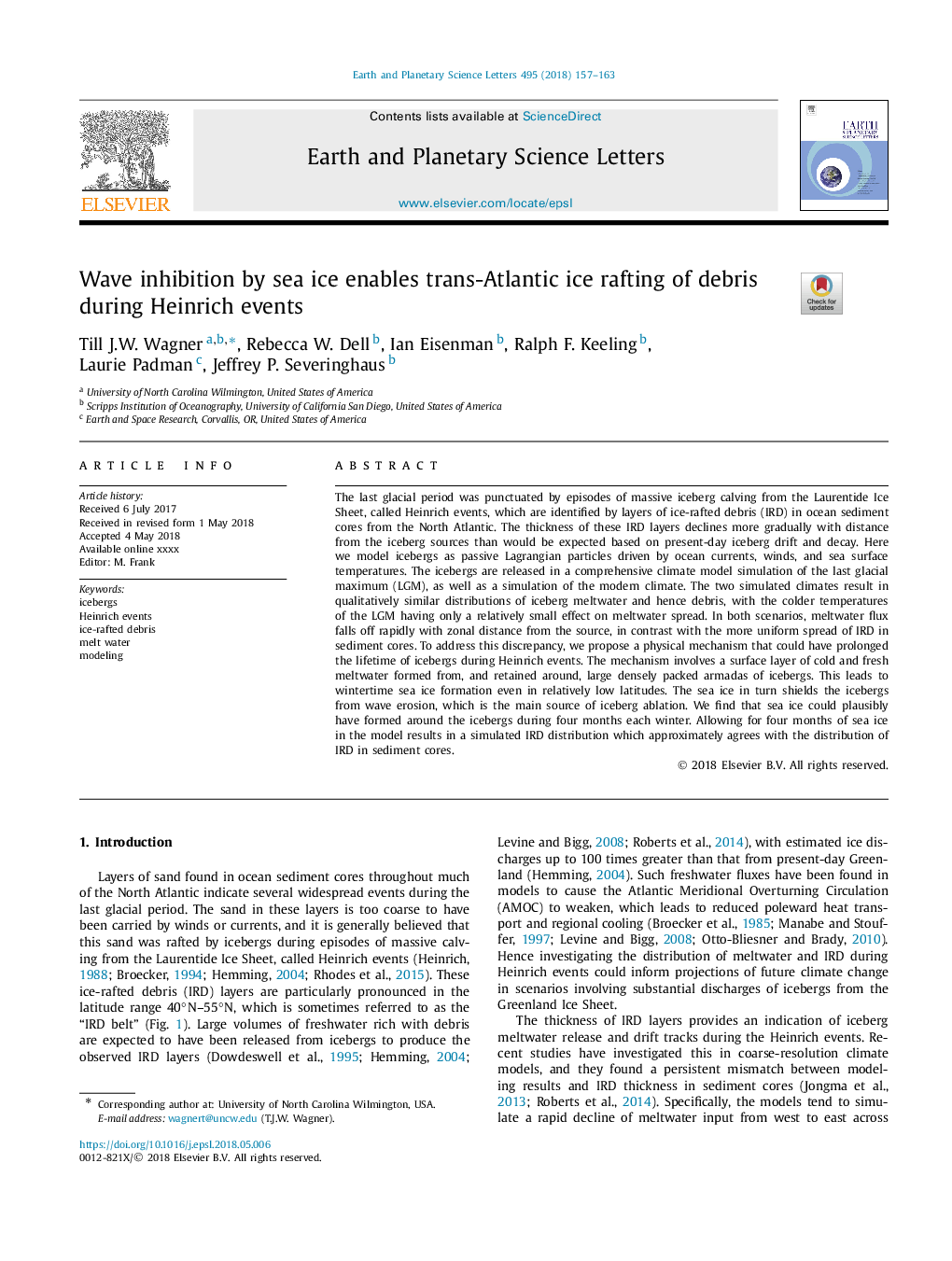| Article ID | Journal | Published Year | Pages | File Type |
|---|---|---|---|---|
| 8906805 | Earth and Planetary Science Letters | 2018 | 7 Pages |
Abstract
The last glacial period was punctuated by episodes of massive iceberg calving from the Laurentide Ice Sheet, called Heinrich events, which are identified by layers of ice-rafted debris (IRD) in ocean sediment cores from the North Atlantic. The thickness of these IRD layers declines more gradually with distance from the iceberg sources than would be expected based on present-day iceberg drift and decay. Here we model icebergs as passive Lagrangian particles driven by ocean currents, winds, and sea surface temperatures. The icebergs are released in a comprehensive climate model simulation of the last glacial maximum (LGM), as well as a simulation of the modern climate. The two simulated climates result in qualitatively similar distributions of iceberg meltwater and hence debris, with the colder temperatures of the LGM having only a relatively small effect on meltwater spread. In both scenarios, meltwater flux falls off rapidly with zonal distance from the source, in contrast with the more uniform spread of IRD in sediment cores. To address this discrepancy, we propose a physical mechanism that could have prolonged the lifetime of icebergs during Heinrich events. The mechanism involves a surface layer of cold and fresh meltwater formed from, and retained around, large densely packed armadas of icebergs. This leads to wintertime sea ice formation even in relatively low latitudes. The sea ice in turn shields the icebergs from wave erosion, which is the main source of iceberg ablation. We find that sea ice could plausibly have formed around the icebergs during four months each winter. Allowing for four months of sea ice in the model results in a simulated IRD distribution which approximately agrees with the distribution of IRD in sediment cores.
Related Topics
Physical Sciences and Engineering
Earth and Planetary Sciences
Earth and Planetary Sciences (General)
Authors
Till J.W. Wagner, Rebecca W. Dell, Ian Eisenman, Ralph F. Keeling, Laurie Padman, Jeffrey P. Severinghaus,
